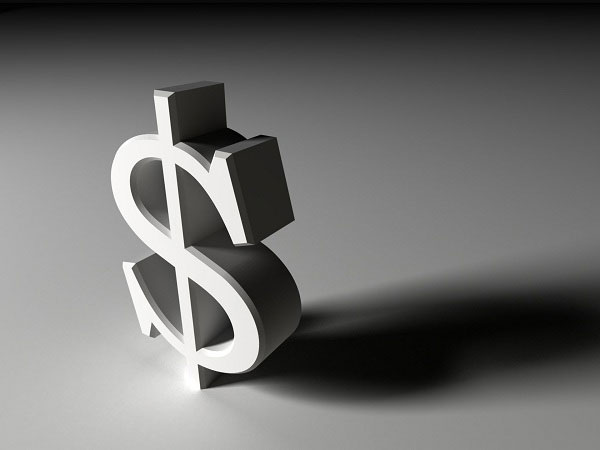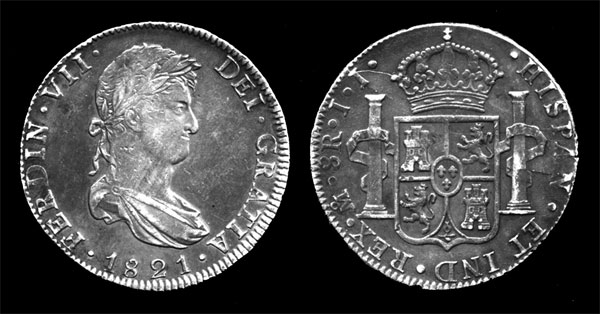The origin of the $ symbol
The symbol began to appear in the 1770s, in documents of British-Americans with business with Spanish-Americans.
However, it was not until the 1800s that it became popular, around the time that the first US dollars were officially minted. Previously, this symbol was used as a symbol of Spanish units of money , which is the 'p' symbol of the peso .

How is the word 'p' converted to '$' for the dollar? When recording financial documents with pesos, they often write down, such as ' 1 peso ' becoming ' 1 p ' . But when in plural form, for example ' 1,000 pesos' , it becomes ' ps' .
When you have to write 'ps' too many times in financial documents, British Americans begin to group 'p' and 's' together. The upper half of this symbol looks very similar to the 2-dollar dollar symbol today.
Even more lazy, they often write the 'p' part with only 1 stroke down to 's' , like this '$' .

The peso Ferdinand VII of Spain, 1821
In the earliest texts using this writing, the dollar is often written in either two strokes or only one stroke, but they all represent one thing, which is the peso.
So when did it become a symbol for the US dollar? During the time when the first US dollar was cast in 1792, Spanish money was widely circulated throughout the United States and around the world.
For the most part, the United States designed the dollar as a copy of the Spanish dong , like both material and weight, increasing the denomination (at that time, the coins were made of silver. and valuable in silver).
It leads to being able to convert 1 US dollar into a peso. So, it is normal to use the same symbol for both pesos and dollars.
- The origin of the digital symbol '0' is longer than we think
- Video: The unexpected truth about the origin of the heart-shaped symbol
- Anecdotes about the origin of the kangaroo name of the kangaroo
- 7 symbols everyone knows their origin, few have heard of it
- Mysterious fascist symbols in the German forest
- Video: Do you understand the symbol No.2?
- The origin and meaning of Easter
- Interesting origin of Bluetooth terminology
- Decode the most classic symbols of the ancient world
- Tracing the origins of the Speaker of the Rooster, the symbol of France
- Why is number 0 symbolized by a mysterious circle?
- Video: Why do any of these pants have this mysterious symbol?
 'Fine laughs' - Scary and painful torture in ancient times
'Fine laughs' - Scary and painful torture in ancient times The sequence of numbers 142857 of the Egyptian pyramids is known as the strangest number in the world - Why?
The sequence of numbers 142857 of the Egyptian pyramids is known as the strangest number in the world - Why? History of the iron
History of the iron What is alum?
What is alum? 'Decoding' the heart-shaped symbol
'Decoding' the heart-shaped symbol  Why is the snake a symbol of medicine?
Why is the snake a symbol of medicine?  Decipher the strange symbol that is stuck on cars in Japan
Decipher the strange symbol that is stuck on cars in Japan  Decode the most classic symbols of the ancient world
Decode the most classic symbols of the ancient world  Mystery of ancient Egyptian symbols
Mystery of ancient Egyptian symbols  What does the black triangle symbol on the plane mean?
What does the black triangle symbol on the plane mean? 